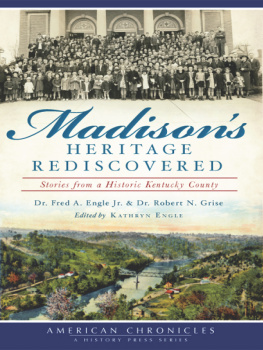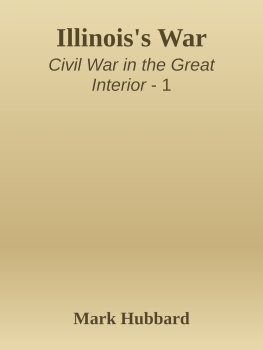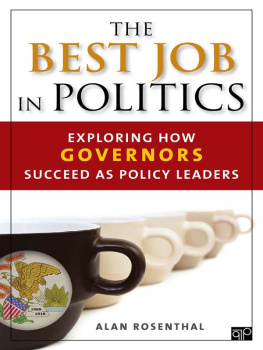Gathering to Save a Nation
CIVIL WAR AMERICA
Gary W. Gallagher, Peter S. Carmichael, Caroline E. Janney, and Aaron Sheehan-Dean, editors
This landmark series interprets broadly the history and culture of the Civil War era through the long nineteenth century and beyond. Drawing on diverse approaches and methods, the series publishes historical works that explore all aspects of the war, biographies of leading commanders, and tactical and campaign studies, along with select editions of primary sources. Together, these books shed new light on an era that remains central to our understanding of American and world history.
STEPHEN D. ENGLE
Gathering to Save a Nation
Lincoln and the Unions War Governors
The University of North Carolina Press Chapel Hill
2016 The University of North Carolina Press
All rights reserved
Set in Arno Pro by Westchester Publishing Services
Manufactured in the United States of America
The paper in this book meets the guidelines for permanence and durability of the Committee on Production Guidelines for Book Longevity of the Council on Library Resources.
The University of North Carolina Press has been a member of the Green Press Initiative since 2003.
Library of Congress Cataloging-in-Publication Data
Names: Engle, Stephen Douglas, author.
Title: Gathering to save a nation : Lincoln and the Unions war governors / Stephen D. Engle.
Other titles: Civil War America (Series)
Description: Chapel Hill : University of North Carolina Press, [2016] | Series: Civil War America
Identifiers: LCCN 2015044922 | ISBN 9781469629339 (cloth : alk. paper) | ISBN 9781469629346 (ebook)
Subjects: LCSH : Lincoln, Abraham, 18091865Relations with governors. | GovernorsUnited StatesPowers and duties. | Federal governmentUnited StatesHistory18th century. | United StatesHistoryCivil War, 18611865Recruiting, enlistment, etc. | United StatesStatesPolitics and government. | United StatesPolitics and government18611865.
Classification: LCC E 459 . E 54 2016 | DDC 973.7092dc23 LC record available at http://lccn.loc.gov/2015044922
Jacket illustrations: Inauguration of Abraham Lincoln at the U.S. Capitol, 1861 (courtesy of the Library of Congress, LC-DIG-ppmsca-53445); inset of Abraham Lincoln from 1864 portrait (courtesy of the Library of Congress, LC-DIG-ppmsca-19190).
An earlier version of Chapter 10 was published as Its Time for the States to Speak to the Federal Government: The Altoona Conference and Emancipation in Civil War History 58:4 (December 2012). 2012 by The Kent State University Press. Reprinted with permission.
For Stephanie, Claire, and Taylor
Contents
Gathering to Save a Nation
Introduction
The American Civil War was as much a story of cooperation as it was of conflict. For all we know about why Southerners left the United States, historians still grapple over how and why Northerners restored them to the Union. Secession provided Unionists with an alarming example of just how fragile the federal system was in the mid-nineteenth century. Withdrawal in any form appeared destructive, almost madness, and it inspired loyal political leaders to demonstrate that states had more rights in the Union than outside of it. This revelation motivated loyal state leaders to unite in hopes of vindicating democracy. The ensuing war caused by the Southern departure, ironically, forged a powerful federal-state alliance that produced a Northern army powerful enough to defeat Confederates. Scholars seeking to uncover the Unions formula for victory have therefore expanded their investigations to include the character of governments (Northern and Southern) as contributing factors.
Northerners witnessed a surge of governmental activism at both the state and national levels that sustained mobilization throughout the war. The Unions defense in 1861 revealed intense nationalist feelings, but marshalling the resources necessary required an extraordinary coordination between the federal government and the states. Yet before Northern soldiers organized and marched off to war, the mobilization of men and matriel necessary to fight the war rested on the partnership between Abraham Lincoln and loyal state governors. It was this alliance that established and shaped the ways the Union applied its military power against the Confederacy in pursuit of victory. Only by examining this crucial partnership can we begin to understand how it contributed to the new nation Lincoln referred to at Gettysburg. In short, this work explores how Lincoln dealt with the war governors, and they with him.
For all that has appeared in print on Lincoln and the Civil War in the 150 years since the conflict, only William Best Hesseltines classic, Lincoln and the War Governors , serves as the seminal work on this important relationship. Characteristic of its time in contributing to the Lincoln idolatry, Hesseltine portrayed Lincoln as a master manipulator of political opinion and of conflicts with governors over mobilization. He argued that the president was the key figure who brought Northern governors into tow, doing what was needed despite them. The victory of nationalism over localism, of centralization over states rights, Hesseltine maintained, was, in the last analysis, a victory of keener intellect over men of lesser minds. Consequently, the history of the Civil War merges into the biography of the man in the White House. That much is true.
Yet, in as much as scholars credit Lincoln for engineering Union victory, he also benefitted from the governors collective efforts in aiding him. Hardly did the president regard his loyal chief executives as men of lesser minds, or dismiss them as insignificant spectators watching the war unfold from the state capitals. Quite the contrary, loyal governors (whether Republican or Democrat) demonstrated considerable influence by collaborating with the president, partnering with him to mobilize for war, and, at times, pushing him toward greater national efforts. Governors experienced the same expansive powers that Lincoln enjoyed during the war. Given the federal structure of antebellum mobilization that leaned on state militias, governors held extraordinary power in wartime. The partnership between Lincoln and the governors came most dramatically in the area of national mobilization. Lincoln understood their importance far better than Hesseltine allowed. The president was neither in conflict with his loyal governors, nor did he see them as rival executives. Yes, they had disagreements, but Lincoln was not trying to overpower them politically, ruin their prestige, or dominate their affairs. Rather, he included them as essential and representative parts of the whole, which was essential to the Unions preservation and thus reinforced the federal-state partnership necessary to vindicate democracy. Without the willingness of loyal governors who agreed independently to uphold the Union, marshal their states resources, and cooperate in establishing a national army, Lincoln would have been hard pressed to preserve the Union. William C. Harris takes this view in his volume Lincoln and the Union Governors , which provides a point of departure for challenging Hesseltines thesis. In short, Harris argues that Lincoln recognized and respected the governors political and constitutional authority and worked with them to maintain a unified war effort. He emphasizes their contributions and stresses that Lincoln relied upon these governors to win the war and preserve the Union.








